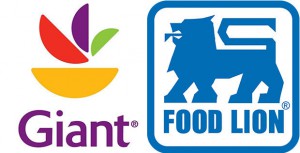Share This
Related Posts
Tags
Major Merger
By Ioana Neamt on Jul 28, 2016 in News
Two Europe-based grocery chain companies have recently completed their $28 billion merger— a marriage that will have a big impact on the U.S. retail market.
a marriage that will have a big impact on the U.S. retail market.
Royal Ahold, based in Zaandam, the Netherlands, operates Stop & Shop, Giant, and Martin’s stores in the U.S., while Brussels-based Delhaize operates in the U.S. under the Food Lion and Hannaford brands, the Richmond Times-Dispatch reports. The two companies have joined forces to become the fourth-largest supermarket operator in the country, following in the footsteps of Walmart, Kroger and Albertsons. The new company will operate under the Ahold Delhaize name and will be headquartered in the Netherlands.
Plans for the merger first surfaced in June 2015. In order for the deal to move forward, the Federal Trade Commission has required that 81 overlapping stores be divested by the two companies to competitors. As a result, Florida-based Publix is set to acquire 10 Richmond-area Martin’s stores; Weis Markets will take over 38 stores in Delaware, Maryland and Virginia; Big Y Foods will grab seven stores in Massachusetts; New Albertsons will grab one Maryland store; Saubel’s Market will acquire one Pennsylvania store; Tops Markets will buy six stores in Massachusetts and New York; and Supervalu will land 18 stores in Maryland, Pennsylvania, Virginia and West Virginia.
The FTC imposed the condition in order to avoid the merger from eliminating direct supermarket competition, which could harm consumers.

Dick Boer, CEO of Ahold
It is not yet clear whether Martin’s will become Food Lion or vice versa following the merger. However, experts predict that the two brands will continue to operate under the same name. Martin’s is reportedly the number one grocery store in terms of sales in the Richmond area, while Food Lion is one of the region’s largest employers.
According to Food Trade News, both Martin’s and Food Lion chains reported declining market shares in recent years, due to significant market expansion and development of a plethora of new stores from diverse brands. The retail market is also shifting towards e-commerce and online shopping, forcing retailers to rethink their strategies.
Marcus & Millichap’s latest retail outlook shows that non-store spending drives a much larger share of total monthly retail sales. Retailers have also begun pairing their physical and digital presence in order to reach a larger and more diverse audience. The report also emphasizes the fact that the lines between traditional and digital retail will become more and more blurred, and companies will need to find new ways to cover both outlets. An example of this is Amazon’s plan to branch out into physical locations, which entails of the opening of 300 to 400 bookstores across the U.S. The move would turn Amazon into a leader in the bookstore category, comparable to Barnes & Noble.
Nevertheless, unlike bookstores, grocery stores aren’t expected to go anywhere in the near future, and local market leaders such as Martin’s and Food Lion have already established a loyal client base. The merger between their parent companies is, however, expected to generate a ripple effect that will impact supermarket retailers and force a shift in market strategies for the new company’s competitors.
